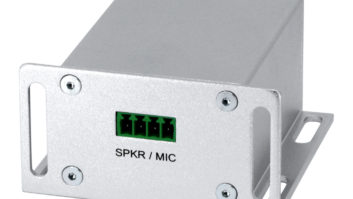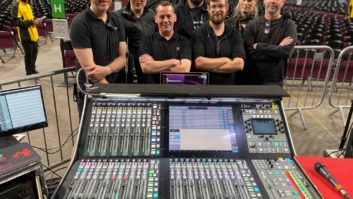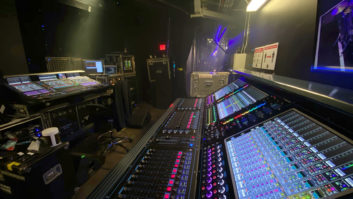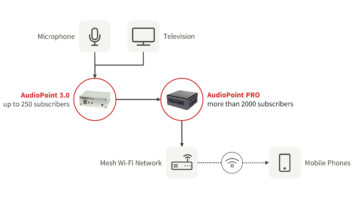
Barix Instreamer IP audio devices are being put to a somewhat unconventional pro AV use by encoding captured whale sounds on Canada’s Pacific coast. Dedicated to protecting Canada’s Pacific coast, Pacific Wild has deployed audio monitoring stations at four points along the British Columbia shoreline to capture live sounds of humpback whales in their natural marine environment. The monitoring stations use rugged ‘hydrophones’ – microphones designed for underwater listening and recording – to capture whale audio and other sounds of the ocean in high quality. Barix Instreamer IP audio devices encode the captured sounds live and stream the audio 24/7 over the internet to Pacific Wild offices, allowing Pacific Wild employees, scientists and wildlife enthusiasts to study and learn from the behavioral patterns of humpback whales — and how surrounding activity such as shipping activity affects their behaviour. The previous audio system recorded 8-bit audio at 8kHz, which made it challenging to capture clear sound. The Barix solution digitizes the hydrophone-captured audio into 16-bit MP3 for the best signal integrity and compatibility. “I was tasked with rebuilding the entire system,” said Rob MacKenzie, a freelance IT engineer working with Pacific Wild. “I put up a new Linux recording system, added new monitoring systems, improved network availability and rebuilt the power systems for all the enclosures. But the Barix Instreamer has been instrumental to our research. We’re capturing everything from loud identification calls to soft back-and-forth chatter. Just being able to record those very soft sounds proves the bit depth and audio quality we get from Barix.” The Barix devices are bolted into protective, solar-powered enclosures installed off the shoreline and out in the wild, built to withstand the icy blasts of wind and year-round moisture associated with the harsh regional climate. Pacific Wild expects to expand to 12 sites over the next five years, using Barix to encode and stream all live audio. “There is a lot of research going on with humpback whales, including male song and how it changes across large geographical areas,” said MacKenzie. “We can monitor how one whale will start singing a slightly different song, and how it is passed along to other whales. We’re also studying how ambient underwater noises and shipping traffic affect their behavior and ability to communicate. The Barix devices, in addition to providing audio, help us perform measurements, create graphs and understand trends related to all these sounds.” “The Barix encoders spit out data constantly and consistently as long as the radios are up,” he said. The complete, end-to-end network includes 802.11 microwave radios to deliver the live Barix stream from the remote locations to Pacific Wild headquarters. “Barix devices serve scientific applications worldwide,” said Johannes Rietschel, CEO of Barix AG. “The AWI (Alfred Wegener Institute)’s PALAOA station in Antarctica has been using our devices for many years to monitor underwater nature sounds. With the Pacific Wild project, whales are now monitored both in the northern and southern hemisphere by Barix devices! These are just two examples of Barix devices in action, with thousands of installations worldwide serving their purpose with Swiss precision and bespoke reliability.” There is a live stream which is accessible to the public. www.barix.com







